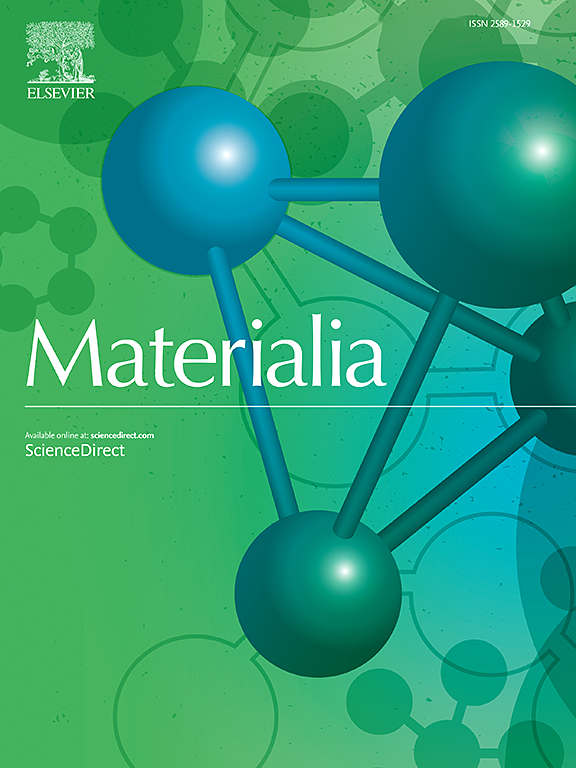Annealing effects on grain size, surface roughness, nanoindentation, and magnetic properties of Fe80Ce20 films deposited on PET and PMMA substrates
IF 3
Q2 MATERIALS SCIENCE, MULTIDISCIPLINARY
引用次数: 0
Abstract
Rare earths (RE) and transition metals (TM) are widely studied for enhancing soft magnetic characteristics in magnetic devices. This study explores Fe80Ce20 films deposited on polyethylene terephthalate (PET) and polymethyl methacrylate (PMMA) substrates using direct current (DC) magnetron sputtering, focusing on the impact of film thickness and annealing temperature on structural, surface, magnetic, and mechanical properties. X-ray diffraction (XRD) confirmed the crystalline microstructure of Fe80Ce20 films, with body-centered cubic (BCC) α-Fe(110) phases. Atomic force microscopy (AFM) showed increased surface roughness with annealed grain size growth. The films were hydrophilic, and annealing increased the contact angle due to rougher surfaces. Surface energy was unaffected by film thickness. Optical properties indicated that thickness affects transmittance, with rougher surfaces causing light scattering. The films were too thin for significant substrate effects, and annealing did not eliminate residual stress. Hysteresis loops revealed good soft magnetic properties with a coercivity (Hc) of about 37Oe and saturation magnetization (Ms) over 1500 emu/cm3. Magnetic domain images showed a striped pattern, with changes in domain size affecting saturation magnetization.

求助全文
约1分钟内获得全文
求助全文
来源期刊

Materialia
MATERIALS SCIENCE, MULTIDISCIPLINARY-
CiteScore
6.40
自引率
2.90%
发文量
345
审稿时长
36 days
期刊介绍:
Materialia is a multidisciplinary journal of materials science and engineering that publishes original peer-reviewed research articles. Articles in Materialia advance the understanding of the relationship between processing, structure, property, and function of materials.
Materialia publishes full-length research articles, review articles, and letters (short communications). In addition to receiving direct submissions, Materialia also accepts transfers from Acta Materialia, Inc. partner journals. Materialia offers authors the choice to publish on an open access model (with author fee), or on a subscription model (with no author fee).
 求助内容:
求助内容: 应助结果提醒方式:
应助结果提醒方式:


